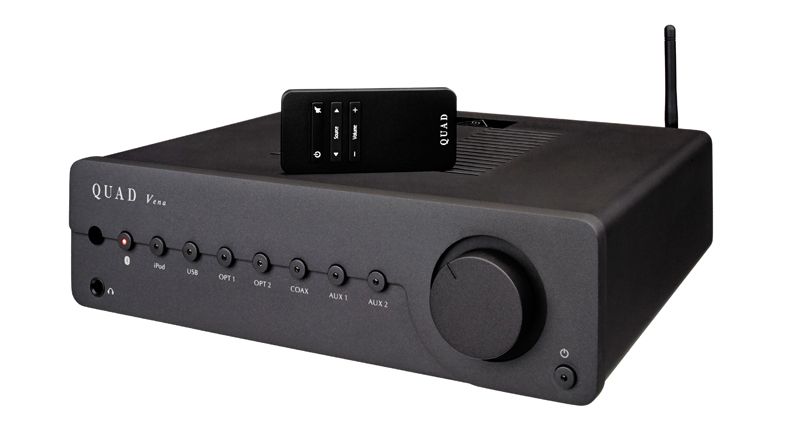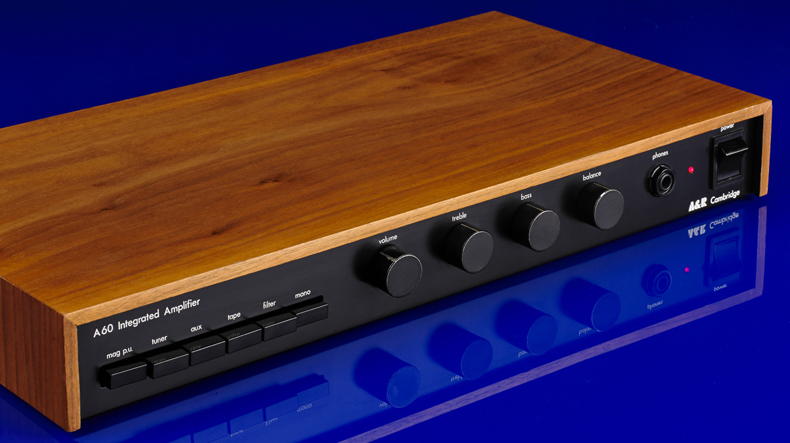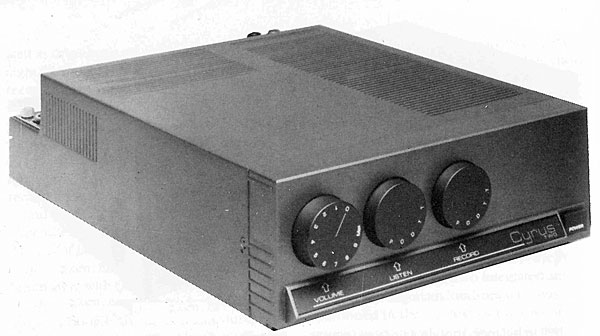Quad’s Vena features a totally new, high-quality Class AB amplifier with a strong 45W RMS per channel on the inside (quoted). It features a Cirrus Logic CS4398 DAC, which is also used in Quad’s Platinum series CD players, as well as aptX Bluetooth connectivity, making it ideal for users who have music stored on their computer or smartphone. There are two RCA line inputs for turntables (through a phono stage), cassette decks, radios, and other similar devices if you prefer to listen to music on tangible media.
On the outside, it looks as if it was designed in the 1960s. It’s pretty traditional Quad, especially in its standard Lancaster Grey paint, which is great if you’re a Quad fan, but not everyone who wants to buy a Vena is. I like the packing; it’s tiny and reminiscent of the 33/303 era, measuring 93.5x313x302mm (HxWxD) and weighing 6.18kg. It appears to be delicate, quiet, and nicely made, especially given the low retail price of £600. However, I believe that many potential buyers are looking for something that is more 2015 than 1965? For an additional £100, those preferring a little less visual austerity can choose for the more exotic, optional gloss coatings.
The new baby Quad has a clear, sharp, and unexpectedly musical tone. It finds that nice medium between lively, rapid, and engaging sound and not being too forward, harsh, or searing; the company has struck the perfect balance, and the result is a civilized performance that’s enduringly entertaining. You lose a little detail, depth, bass punch, and treble extension compared to higher-end Quad electronics, but it’s still a surprisingly capable performer for the price.
The analogue inputs are excellent, however the DAC section has a distinct sound. It sounds tighter and more gripping, more immediate and robust, albeit it lacks the naturalness and ease of a higher-end CD player’s analogue outputs. If you have a good digital source, the secret is to use the DAC to play music from a Mac or PC, DVD, or Blu-ray player, while keeping the analogue inputs for your best sources.
The Vena comes across as tonally even and neutral, with few evident flaws, regardless of input. There’s a hint of dryness, and owners of brighter loudspeakers might find the upper midband a little ‘well lit,’ but it’s never overpowering, and the price is unbeatable. It appears to have plenty of power, with superb dynamics capable of capturing the accenting on loud rock music, but it will lose steam in a large room with small loudspeakers; admittedly, an odd combination.
It has an aptX Bluetooth wireless interface, which works fine as far as these things go, but you wouldn’t want to use it as your primary source for serious listening. Despite what some have remarked about how good it can sound, it’s no match for a traditional lossless, wired digital source; the music becomes grainier, and the soundstage flattens, moving away from its original three dimensions. Quad’s Vena is best used with its regular analogue inputs, but it also makes a great noise with digital, and who can resist the subtle retro styling? Those who do will find it to be a great value and all-around design.







